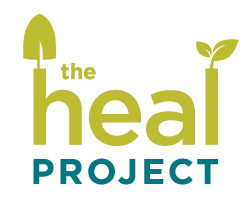Our History
By Chapin Dorsett
Rooted deeply in the San Mateo County (SMC) Coastside community, The HEAL Project (THP) sprang out of concerns of local parents and community members that children were becoming too detached from the food that nourishes them. Between 2001 and 2005, this group sought funding to construct an educational garden at Hatch Elementary School in Half Moon Bay.
In October of 2005, our signature program, later named the Intensive Garden Program (IGP), was established. The program aimed to address childhood obesity in Coastside schools through a garden, nutrition and (for a brief time) sports curriculum.
After a yearlong pilot program for six of Hatch’s 2nd and 3rd grade classes, the IGP was expanded in 2006 to incorporate all ten of the school’s 2nd and 3rd grade classes. In addition, the Garden Club was created as a recess option for 4th and 5th graders, giving students the opportunity to continue their connection with the garden past our formal curriculum.
From 2007-2008, we expanded our IGP program to Farallone View Elementary School and constructed a garden on their campus. Our IGP curriculum was set up for 26 weeks of environmental education in coordination with California state standards.
Also during this time, students in our program at Hatch became the first student certified growers in the state of California to sell student-raised produce in farmers’ markets. Student interest in the markets spurred us to partner with the Coastside Farmers’ Market on the introduction of our Junior Marketeers Program. Graduates of the IGP practice math, cooperation, responsibility and customer service skills as “Marketeers” selling student-grown produce at the farmers’ market in Half Moon Bay.
In 2008-2009, THP won the J. Russell Kent Award from the SMC School Boards Association for our IGP at Hatch. We officially became a nonprofit, taking up the name HEAL as an acronym for Health, Environment, Agriculture Learning. Upon acquiring 501c3 status, we framed our original mission statement to share our intentions with the community:
The HEAL Project teaches students to make healthy choices for themselves and their world.
In 2010, THP’s second signature program was initiated. As part of the vision of the San Mateo County Food Systems Alliance and with support from the San Mateo County Health System, the San Mateo County School Farm (SMCSF) was created. Thanks to the generosity of Dave Lea of Cabrillo Farms, we secured an in-kind lease for two-acres of farmland north of Half Moon Bay. With this new space, we began providing farm field trips for schools within SMC.
Over the next few years, we tested out several arrangements and worked through the challenges of launching a new program. By 2013, we had landed on a sliding fee scale to make our low-cost field trips free to the highest-need schools in SMC.
In 2015 with our IGP and SMCSF in full swing, we hired the current Executive Director who went to work on an internal strengthening of our organization. We also modified our curriculum and lesson plans to align with state educational standards so we could provide greater support to the science programs of the schools we serve.
2016-2017 was a big renovation year for us. We rebuilt the Hatch School garden and improved infrastructure at the Farallone View School garden and at the SMCSF. We also began a two-year Strategic Planning project, created a new logo, rolled out a new website and adopted an updated mission statement:
The HEAL Project teaches kids where their food comes from and why it matters.
In this same year, THP was honored to win two awards: the first “Innovation Award” at the Mel Mello Farm Day Luncheon and recognition for One Planet Challenge as part of the SMC Office of Education’s (SMCOE) Environmental Literacy Initiative for Local Sustainable Food System Instruction in SMC.
In 2018-2019, our new relationship with the SMCOE helped us adapt our lesson plans for each grade level visiting the farm to support California’s Common Core and Next Generation Science Standards. Moreover, we developed our Theory of Change and created an Evaluation Plan to help us measure our impact. These tools have helped us to clearly communicate how our programs benefit the students that we serve.
Where we are now: We continue to work hard each day, using best practices to refine our curriculum, evaluation tools and Strategic Road Map. Our hope is that students who participate in our programs will grow up to be more invested in their own health as well as the health of the environment. We also seek to inspire student confidence in the essential life skills of choosing to prepare and consume local, fresh food for the benefit of themselves, their families and the community.
—
Chapin is our Operations Manager. She is excited to encourage community-based environmental awareness beginning with small hands in the dirt.
